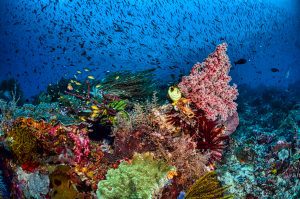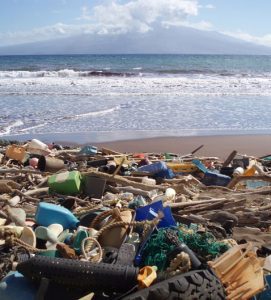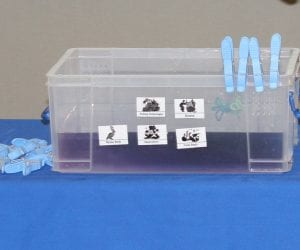
Educating K-12 students about the challenges faced by our oceans, and the ways we can preserve the oceans, is vital to achieving a sustainable future. Only when students understand the role oceans play in Earth’s natural systems and see ocean health as a precursor to wildlife and human health will they be able to fight for protection of our blue planet.
Why Focus on Oceans?
The world’s oceans make up over 70 percent of the Earth’s surface. They serve as critical habitat for a vast array of diverse wildlife and are the backbone of many of Earth’s natural processes. Oceans provide over half of the Earth’s oxygen, regulate the climate, and act as a natural carbon sink, slowing the steady march of global warming. Oceans also provide vital nutrients and livelihoods for almost half of the world’s population.
 And yet our oceans are increasingly in trouble. An estimated 8 million metric tons of plastic pollution end up in the oceans every year and the UN estimates that one-third of fisheries globally are overexploited. These mounting threats along with ongoing issues like pollution run-off, warming seas, and corral bleaching threaten marine life as well as human health and well-being. With global population still on the rise and the constant climb in human consumption, these issues are likely to only get worse in the years ahead.
And yet our oceans are increasingly in trouble. An estimated 8 million metric tons of plastic pollution end up in the oceans every year and the UN estimates that one-third of fisheries globally are overexploited. These mounting threats along with ongoing issues like pollution run-off, warming seas, and corral bleaching threaten marine life as well as human health and well-being. With global population still on the rise and the constant climb in human consumption, these issues are likely to only get worse in the years ahead.
Resources for Teaching About Oceans
Follow Population Education on our social channels in the coming weeks, while we take a “deep dive” into the world oceans. We’ll have blogs that explore topics like ocean dead zones, coral reef destruction, and how ocean biodiversity links to human food security.
We’ll also shine a spotlight on some of the best resources out there for teaching about ocean issues in your classroom. Whether you teach kindergarten or AP Environmental Science, we will share hands-on, memorable resources to help bring marine topics to life. Resources range from this short kid-friendly video that explains Sustainable Development Goal 14, Life Below Water, to articles like this one about how ocean acidification has breached its planetary boundary.
And we’ll link to plenty of lesson plans from our Population Education library and elsewhere, putting the best lessons for teaching about oceans right at your fingertips.

Polluted water from one of our interactive lessons on ocean health, Code Blue: Endangered Oceans.
Free Educator Webinar: Virtual Workshop for Teaching About Oceans
On December 10th, we’ll host a free online webinar: Lessons for Understanding Human Impact on the World’s Oceans. With a focus on grade 6-12 teachers, we’ll share ideas and lesson plans for teaching about human impacts on the world’s oceans, emphasizing the importance of protecting these vital marine ecosystems.
During the interactive session, educators will watch a visual demonstration that models the limited area where most ocean life is found, participate in an interactive story about ocean pollution over time, and collaborate in groups to design effective methods for cleaning up ocean oil spills.
All participants will walk away with a full pack of lesson plans to further support their teaching of human impacts on Earth’s resources. We hope you’ll join us for this memorable and important PD – register for the oceans webinar today!
How Do Ocean Topics Fit into Content Standards?
Teaching about the world’s oceans is a powerful way to highlight the inextricable connections between people and the planet, a concept that is woven throughout both state and national science standards. In fact, learning about the oceans is so critical to scientific understanding of our planet that the National Marine Educators Association states, “You can’t be science literate without being ocean literate.” And indeed, the NGSS standards include both broad concepts like how interactions between oceans and atmosphere drive weather and climate patterns, as well as specific examples of how human activities impact marine ecosystems, like the impacts of climate change and overuse of resources.
Let’s Teach About Oceans!
Regardless of the grade you teach, covering ocean health deserves a spot in your planner. You’ll be covering important standards while motivating students to protect one of Earth’s most vital ecosystems. We look forward to supporting you every step of the way!
Image credits: Plastic on beach (Kanapou Bay, Kaho‘olawe, Hawaii by NOAA’s National Ocean Service is licensed under CC BY 2.0); Coral reef close-up (Close-up of Coral Reef by Tom Fisk on Vecteezy)


